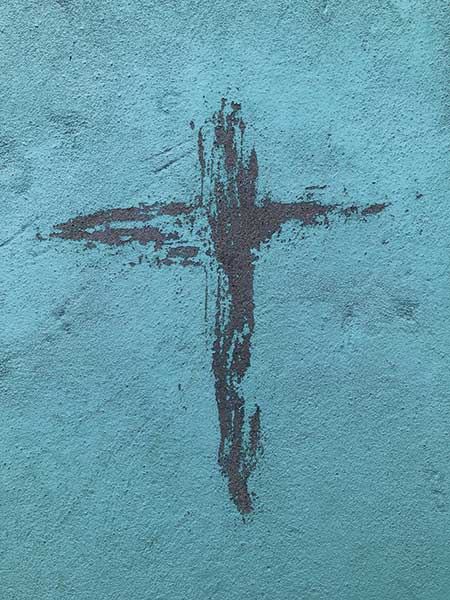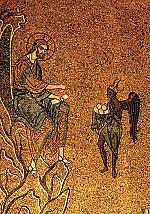Ash Wednesday Week

[Above: Cross=Love—Vaishakh pillai on Unsplash]
Yet even now, says the LORD, return to me with all your heart, with fasting, with weeping, and with mourning; rend your hearts and not your clothing. Return to the LORD, your God, for he is gracious and merciful, slow to anger, and abounding in steadfast love, and relents from punishing.
(Joel 2:12–13)
Do not store up for yourselves treasures on earth, where moth and rust consume and where thieves break in and steal; but store up for yourselves treasures in heaven, where neither moth nor rust consumes and where thieves do not break in and steal. For where your treasure is, there your heart
will be also.
(Matthew 6:19–21)
Thursday after Ash Wednesday
Father! Thou hast patience long
With the sick and weak;
Heal us, make us brave and strong,
Words of comfort speak.
—Johann Georg Albinus (1624–1679); translated by Catherine Winkworth (1827–1878)
I remember well one of the first times I went to an Ash Wednesday service. The service was at noon on a university campus, right in the heart of the busiest part of the quad. Outside the sun was shining, buses went by, music escaped from passing cars, and students crowded the sidewalk. Inside it was dark and quiet and cool. The building, designed to resemble an old Gothic cathedral, was mostly stone, and my footsteps echoed. The cross on the altar was veiled in black. The service was contemplative, with sparse music, extensive Scripture, and a liturgy reaching back over hundreds of years, if not a thousand. When I went up front to receive ashes on my forehead, the pastor told me, “Remember that you are dust and to dust you will return.”
I came back out into the bright sunlight and made my way to the bus stop. As I climbed onto the bus, a girl turned to me and noticed the ashes in the shape of a cross. “Is that some kind of sorority thing?” she asked.
The Ash Wednesday call to contemplate our own mortality and Christ’s sacrifice comes to us just so—in the midst of our daily life, in the midst of a world that looks on us with curiosity, even hostility. Lent is not an easy journey. Thus we need the help that Johann Georg Albinus prays for in this hymn.
Albinus, known as a faithful and devout Lutheran pastor, wrote a number of hymns, some used by Johann Sebastian Bach in his choral works. When he died his son had inscribed on his tombstone:
While he lived he was dying, and now when he is dead he lives, because he knew that life is the way of death and death is the entrance to life.
We will not make it very far on this journey without God’s help. Walk with him this Lent; seek healing and comfort from Jesus, where alone they can be found.—by Jennifer Woodruff Tait
Friday after Ash Wednesday
God’s servants have their spiritual fasts and their heads are metaphorically covered with ashes. I will not stop to read you the list of the occasions in which the princes of the royal blood of Heaven are found sitting in the place of humiliation and distress.
—Charles Spurgeon (1834–1892), “Beauty for Ashes”
My first experience with Ash Wednesday occurred in high school. I went to see The Passion of the Christ in the theater and found myself surrounded by people from presumably Catholic or high church Protestant traditions, smudges of black prominent on their foreheads. As a teen in an evangelical Protestant church—one that, as Spurgeon implies here, found “bodily exercises” too Catholic—it took me a moment to figure out why.
Still, as we fellow Christians sat in that theater, together experiencing a visceral representation of the humiliation and distress of our Lord, I could see the value of such visual reminders of our shared beliefs. Ash is a sorrowful reminder of our mortality, our grief over our curse received with Adam’s sin; the dark stain marking us like Cain and separating us from intimacy with God. On the screen images flashed by that brought me to tears. Here was a picture of that same God bridging the chasm, taking on the humiliation of Adam’s frailty, suffering, and becoming a curse for us (Gal. 3:13).
As you begin the Lenten season, may the ash, however you see fit to conceive of it, bring to mind the sin that made Christ’s journey to Calvary necessary. But even as “sorrow has salted all our penitential tears,” remember the Lord promises to give “beauty for ashes” in the end. —by Kaylena Radcliffe
Saturday after Ash Wednesday
We read in the books both in the Old Law and in the New that the men who repented of their sins bestrewed themselves with ashes and clothed their bodies with sackcloth. Now . . . at the beginning of our Lent . . . we strew ashes upon our heads to signify that we ought to repent of our sins during the Lenten fast.
—Aelfric of Eynsham (c. 955–c.1010)
Historically, liturgical Christians take the position that liturgical practices are helpful ways of doing things that we all agree true believers will do anyway. We all know that believers pray: well, we have the Liturgy of the Hours to guide us in doing so. We know that we are to worship together: we have a liturgical calendar and traditions to guide us in doing so.
To me it seems clear that fasting—like prayer, common worship, the sacraments, works of mercy, and sexual chastity—is one of those basic elements of the Christian faith clearly ordained in Scripture. Jesus in Matthew 6 assumes that his followers will fast, just as they will pray and give alms. Mark 2:20 seems to say that Jesus’s followers will (and should) fast after his Ascension.
Hopefully my liturgical fasting will further my own “spiritual journey,” but that isn’t really the main point. In fact liturgical practices don’t really have to have a “point.” They are joyful expressions of faith—bodily ways of entering into the story of salvation. I trust that God will use them to my good and the good of others, but I don’t have to sit around checking my spiritual temperature all the time.
In fact every Lent I fail. Every Lent I draw up ambitious plans of spiritual improvement and fall flat on my face. I have never yet met a Lenten discipline I couldn’t manage to violate at some point. And in my experience, this is more common than not among Christians. Jesus’s disciples fell asleep as he watched in Gethsemane, and if we follow the estimable tradition of signing up to “watch with Jesus” on Holy Thursday, we will too.
But the only hope any of us has is that God doesn’t keep score.
And that is the point of Lent. —by Edwin Woodruff Tait
By CHI staff
[Christian History originally published this article in Christian History Issue #143+ in 2022]
Next articles
Support us
Christian History Institute (CHI) is a non-profit Pennsylvania corporation founded in 1982. Your donations support the continuation of this ministry
Donate







